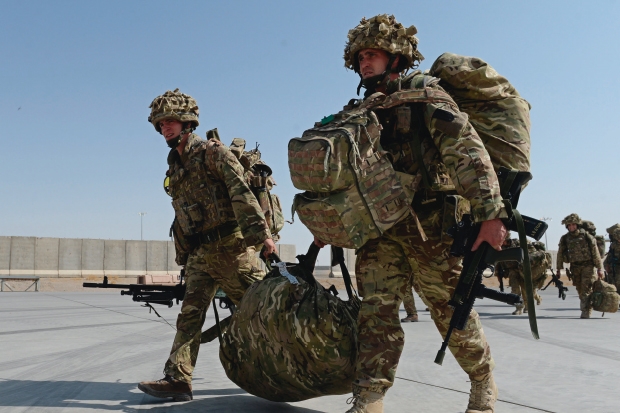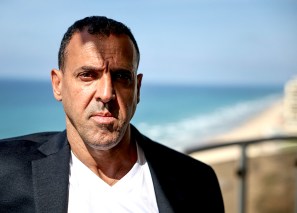Matthew Green, former Financial Times and Reuters correspondent, remains unimpressed by officialdom’s response to casualties who aren’t actually bleeding:
Ever since October 1914, when ‘Case One’ arrived in Myers’s care, the system for tending to the mental wellbeing of soldiers has grown up in a piecemeal and ad-hoc fashion, overshadowed by the Army’s stubborn ambivalence towards psychological injury
(Dr Charles Myers was the Cambridge psychologist seconded to the Royal Army Medical Corps who first used the term ‘shell shock’.)
Green acknowledges that ‘experience teaches that the psychological wounds of war have proved stubbornly difficult to treat’. Nevertheless, he concludes that despite millions of pounds of public and private money being spent to improve treatment, and attitudes to psychiatric casualties having changed radically since Myers’s day, ‘many of those in need of help are not receiving adequate support’. While the MoD is responsible for caring for servicemen as long as they are in uniform, as soon as they are discharged the job passes to the NHS — and to the growing military charity sector.
Some of us have argued for years that closing military hospitals was the gravest mistake, but then I have long thought that while our medical services in the field don’t come any better, the defence medical establishment’s corporate thinking can be as pig-headed as ever it was in Myers’s day, when his views did not appear to support the bankrupt strategy of attrition and he was effectively driven out of France. Little wonder that ‘despite the government’s pledges to ex-forces’, Green has met ‘military families across Britain who feel abandoned and betrayed’.
The number seeking help, according to Combat Stress, the largest of the ex-services’ mental welfare charities, has of late been rising by 26 per cent year on year, and nobody of course knows by how much further it will increase. On the other hand, while the campaign in Afghanistan has brought phenomenal goodwill for the services, and consequently spectacular success for innovative fundraising charities such as Help for Heroes, there is concern that public generosity may dwindle as memory fades. It is against this background that Green sets out to answer the question: ‘How does war break people, and how best might they be healed?’
Given that the answer, by his own reckoning, has eluded some of the finest professional minds in the business for the past century, this is ambitious to say the least. Green hoped that his time as a journalist among soldiers on the ground ‘would serve as a passport into what at first seemed like a forbidding, closed-off military sub-culture, curiously divorced from mainstream British life’ (echoes here of the younger Moltke’s description of the pre-1914 British army — ‘That perfect thing apart’).
The problem is that the services — the army especially, the focus of Green’s study — are initiate organisations. When ‘many ex-forces’ warned him to be wary of the stories he heard, ‘mindful that the first casualty of war is often the truth’, they weren’t wrong. But Green says he has been at pains to check his facts, and he acknowledges that the events described are ‘collections of memories, prone to warp with time’. As an outsider, his task was always going to be hard, for understanding the almost infinitely nuanced culture of the services is a lifelong endeavour. I smiled (sympathetically) at his account of turning up at the RAF Club in Piccadilly inappropriately dressed.
One sees this struggle more seriously when he tries to measure the response to criticism by some veterans of Combat Stress’s new clinical director, whose novel regime of treatment aims to cure rather than provide whole-life support, which was the charity’s former approach. Just whom do you listen to, let alone believe?
Nevertheless, the book is both compelling and instructive. Its account of the development of military psychiatry is particularly good. Green has also ranged wide throughout the military charity sector, ‘like a Victorian butterfly collector, delighting in discovering a new species’, finding that organisations ‘with “for Heroes” occupied by far the biggest branch in this taxonomy’(Rugby for Heroes; Fishing for Heroes; Hounds for Heroes etc). In Bournemouth he met one Sarah Bennett Thurston, founder of a charity called Garrison Girls, which raises money for mental welfare support by producing calendars of forces wives posing nude. Green does not say if the venture and others like it (such as Hotties for Heroes) have had any unfortunate unintended consequences.
And herein lies an issue which Lord Ashcroft, the government’s special representative on ‘veterans’ transition’, addressed in a report last year. Identifying 350 organisations with objectives relating to welfare and mental health — a group with an annual income of some £400 million — his verdict was blunt: the maze of overlapping and competing bodies ranged from the ‘very competent to the (frankly) ineffective. While individual charities may believe they are making the best use of funds as an organisation, collectively they are not.’ Green has some ideas of his own on what to do, such as establishing a senior post within the Cabinet Office to oversee reform.
Aftershock is indeed a work of integrity and substance, and as so much of it touches on interdepartmental matters it ought to be read by every minister. Perhaps a little of the £400 million might be spent on providing them with copies.






Comments